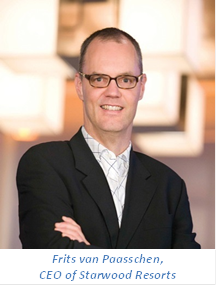ATD Blog
Let’s Recreate Leadership!
Mon Jun 17 2013
Blog #1: The nature of organizations has changed, and the leaders they require in the future will be fundamentally different from those they require today. It is time to recreate leadership for the requirements of the modern organization.
Is your organization serious about developing leadership – or just going through the motions? Do your talent management efforts anticipate the future or merely close yesterday’s gaps? Is your organization prepared to innovate at the core and at the edge? Are you developing leaders fit for the future demands of your business and industry? The easy answer is to simply nod. Yes, of course we are developing leaders for tomorrow; of course we are serious about leadership.
But can you honestly say that we are developing the next generation of leaders, rather than simply seeking to clone what we already have … and what we know – in today’s environment -- works? The acid test is whether the leaders we are recruiting, developing and deliberately deploying into key business roles are viable for the future: do they have the inspiration, imagination and drive to take the business forward, creating new revenue streams and profitable new markets? Or will they attempt to ride on the coat tails of their predecessors by doing the same, but better, faster and perhaps cheaper?
What I have come to observe is that ‘cloning’ is a natural and habitual organizational activity – that serves to preserve homeostasis in how organizations function. In company after company that I have worked with and within, more often than not leaders recruit and develop leaders in their own image. It is only natural, but it is also dangerous in terms of organizational performance and it flies in the face of business reality.
The reality is that leadership is a moving target – given that it is highly contextual in nature. This is often not understood in our attempts to develop leaders. What we want and demand from our leaders is in a constant state of flux. If you doubt this consider the attitudes of two of America’s greatest leaders. George Washington, the first president, was a slave owner for most of his life; while Lincoln, the 16th incumbent, fought to end slavery. These facts are not meant to diminish Washington’s stature as a leader but to remind us that moral norms change over time – and so do our expectations of our leaders. What is acceptable, or even desirable, in a leader at one time may be unacceptable or abhorrent at another. Or consider Britain’s military commanders during the First World War who ordered cavalry charges against the German machine guns. What is considered as a best practice as a leader at one time, can prove disastrous in any other context.
In a myriad of other smaller ways, leadership is constantly being recreated. Both the content and style of leadership is reinterpreted and renegotiated over time. The command and control style of leadership deployed so successfully during the industrial age, for example, is increasingly questioned in an information age economy. Some aspects of leadership remain constant while others seismically change with new and different context. For example ten years ago, it was not necessary for a business leader to be social media literate or focused on sustainability of the environments in which s/he does business; but such situations are almost inconceivable today. At every level, our expectations of leaders shift over time. For organizations, too, it is necessary to periodically courageously recreate leadership. From time to time, the context in which leaders operate changes so radically that the requirements of leadership are transformed. We are at such a leadership inflexion point now.
Leadership with a modern twist
In the last decade, the leadership challenges facing many organizations have changed beyond recognition – and in the next five years they will change again in ways that we can barely comprehend.

Frits van Paasschen, CEO of Starwood Resorts calls this ‘the age of great change.’ And to prepare for the future, we must re-imagine leadership.
There is a saying that what got you here won't get you there. It is advice frequently offered to individual managers. But it applies equally to organizations. When it comes to how they understand leadership, most organizations are stuck in a time warp – made up of the past and the present. The future rarely gets a look in.
My consulting and organization work amongst several high potential future leaders indicates that the challenges facing leaders are changing in far-reaching and fundamental ways. The courage to recreate – business models, organizations, teams and one’s self will be required to cope with a number of significant and unstoppable developments. The clearest of these is the shift from multinational to multicultural - or what I often refer to as super-global. The fact is that leading a business in developed markets is very different to how one leads in emerging markets. The balancing act to lead a business profitably in both types of markets is challenging. And to succeed in the future, organizations will have to balance both simultaneously, while at the same time keeping them enough separate.
Join me in this blog series to explore that which it will take to recreate leadership.
The author would like to thank Robert Kovach, Director Cisco Systems, for his contribution to prior materials that inspired the content of this blog.
You've Reached ATD Member-only Content
Become an ATD member to continue
Already a member?Sign In
